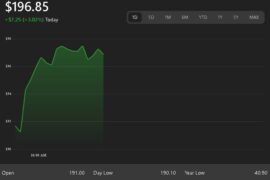In an era where the pace of change is only outmatched by the scale of innovation, future-proofing an organization is akin to preparing a ship for a journey into uncharted waters. The digital transformation, a tidal wave reshaping landscapes, had begun its surge even before the concept of widespread remote work sailed into the mainstream. The key to navigating these tumultuous seas lies not just in adopting digital technology but in how we harness it to reinvent the very essence of how, where, and by whom work is done. Workflow automation, the compass guiding this journey, ensures that organizations can sail smoothly through the evolving paradigms, optimizing efficiency and enabling a focus on strategic innovation.

Embracing Digital Transformation
The Beacon of Change
Digital transformation is the beacon guiding organizations toward future readiness. It represents a shift from traditional methods to a digital-first approach, where technology becomes the core around which strategies are built and executed. This transformation is not merely about adopting new technologies but about rethinking old paradigms in light of what is now possible. It’s akin to replacing the oars of a rowboat with the engine of a speedboat, significantly enhancing the ability to navigate and pace through the waters of market dynamics.
Workflow Automation: The Wind in Your Sails
Streamlining for Efficiency
Workflow automation introduces a powerful gust of wind to propel the organizational ship forward. By automating routine tasks, organizations can ensure that their crew is focusing on navigating through storms (strategic initiatives) rather than rowing tirelessly (manual, repetitive tasks). This not only boosts efficiency but also improves accuracy, reduces costs, and enhances employee satisfaction by freeing them from mundane tasks to contribute more meaningfully.
Adapting to the Remote Work Gale
Anchoring in Flexibility
The shift to remote work, once a mere breeze, has grown into a gale force, fundamentally altering the course for many organizations. Future-proofing in this context means setting an anchor in flexibility; creating an environment where work can be done effectively regardless of physical location. This involves leveraging cloud technologies, collaborative tools, and communication platforms to create a seamless virtual workspace. Just as a ship adjusts its sails to catch the wind most effectively, organizations must adapt their workflows and processes to harness the power of remote work.
Navigating Through Data Seas
Charting the Course with Analytics
In the vast seas of digital transformation, data serves as the stars by which to navigate. Analytics and data-driven decision-making are crucial for organizations aiming to future-proof themselves. By understanding trends, predicting changes, and making informed decisions, organizations can steer clear of obstacles and capitalize on opportunities. Investing in analytics is like investing in a high-quality telescope; it allows you to see further and with greater clarity, ensuring that you can chart the most strategic course forward.
Cultivating a Resilient Crew
Fostering Agility and Continuous Learning
The crew of your ship, your employees, are your most valuable asset in navigating the future. Cultivating a culture of agility and continuous learning ensures that your team can adapt to new technologies, processes, and business models. Encouraging cross-functional collaboration and promoting a mindset of innovation are akin to cross-training your crew, ensuring that everyone can perform multiple roles and adapt to changing conditions.
Building a Sustainable Vessel
Prioritizing Environmental and Social Governance (ESG)
Future-proofing also means building a vessel that can withstand not just the technological storms but the growing demands for sustainability and social responsibility. Organizations that prioritize environmental and social governance (ESG) initiatives are not only contributing to a healthier planet but are also building goodwill and trust with consumers, employees, and partners. This approach is like reinforcing your ship with materials that are not only strong but also sustainable, ensuring it can weather future storms and be welcomed into any port.
Conclusion
Future-proofing your organization requires a multifaceted approach, embracing digital transformation, leveraging workflow automation, adapting to remote work, navigating through data, cultivating a resilient and agile crew, and building a sustainable vessel. Just as the most successful sea captains are those who can read the winds, adjust their sails, and chart a course through the most challenging waters, the most successful organizations will be those that can adapt to the rapidly changing digital landscape. By doing so, they not only ensure their survival but also position themselves to thrive, exploring new opportunities and discovering new lands in the ever-evolving world of business.





